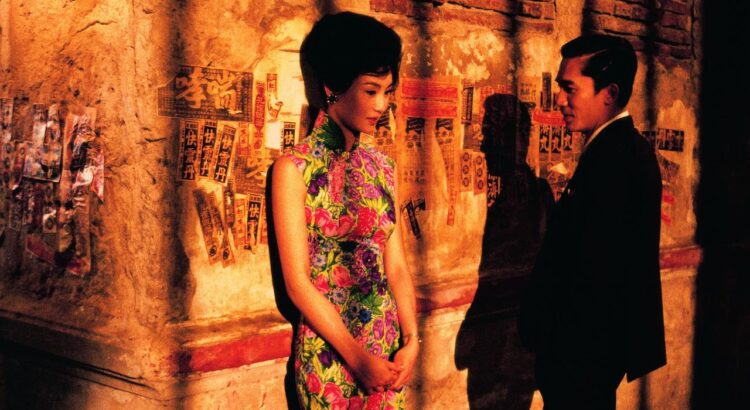In the Mood for Love will rightly go down as one of the best movies of all time. The premise is extremely simple, but the glittery, rich layers of emotional complexity in the movie make it a true pleasure to watch. In 1960s China, a beautiful woman and handsome man move into the same apartment. They soon discover a terrible secret: both of their spouses are having an affair. There is sadness – romance has sputtered and come to a halt – but there is also a grim resignation. Here is an exploration into the unrelenting march of time, the betrayal of a loved one, and the ultimate failure that will meet too many love stories. It’s achingly sad, devastatingly true.
Stung by their traitorous spouses, the two main characters start up an awkward romance themselves. Maggie Cheung is gorgeous and mysterious as Mrs. Chan, and Tony Leung is morose and dapper as Chow Mo-wan. Their romance is carried out in the most insignificant of places: in a sparse diner, where they order steaks for each other, taking a walk outside in the rain, over leftover noodles in a bare bedroom. In the Mood for Love could be interpreted as a revenge plot against two cheating spouses, but it doesn’t read like that for a second. It’s a beautifully understated analysis of two sad people making their way through the world.
You can’t talk about In the Mood for Love without talking about its cinematography. Throughout the movies, the two main characters, who definitely aren’t slouches themselves, are bathed in warm, luscious red and orange and yellow lights. Walking in a dimly lit alley or working in a dilapidated office, there isn’t a second of the film that disappoints. It’s this humid, wavy, lush, luxuriant tone and cinematography that contrasts dramatically with everything the characters lack. They aren’t rich, they aren’t overly charismatic, and they aren’t stable in their lives. While they have beauty in abundance, they lack true love.
A gloomy, bewitching cello score follows the two characters wherever they go, reminding viewers that this is, ultimately, a sad movie. While we may be hypnotized by the film’s lush visuals, we can’t be distracted from its subdued message. Notably, the two lovebirds remain platonic throughout the movie, despite their obvious chemistry. Although this may be frustrating for the viewers, it reflects a central truth to the movie: relationships aren’t always neatly packed up, perfectly ready for the big screen. They’re messy, ambiguous. The two aren’t taking revenge. They’re just trying to survive.


